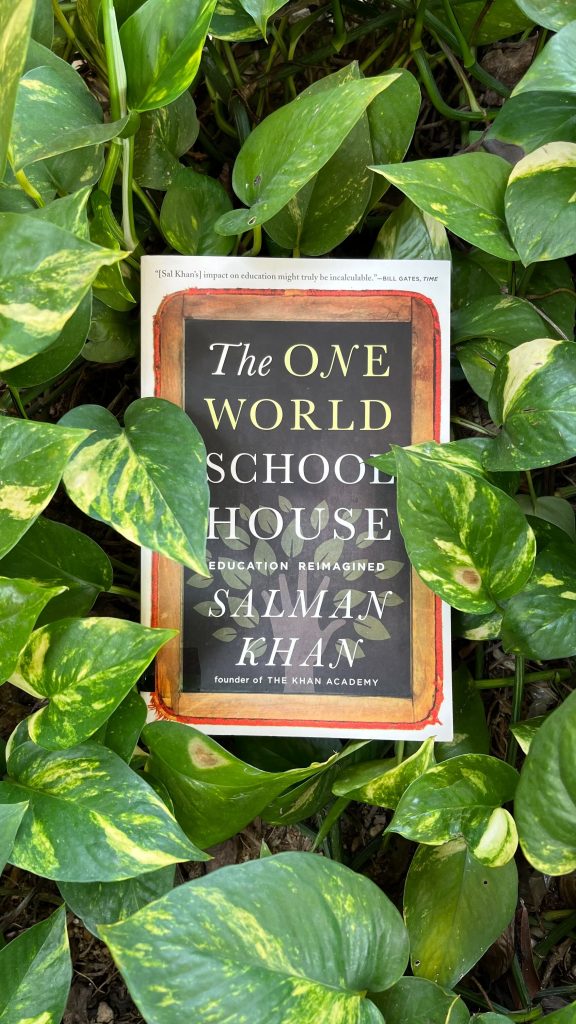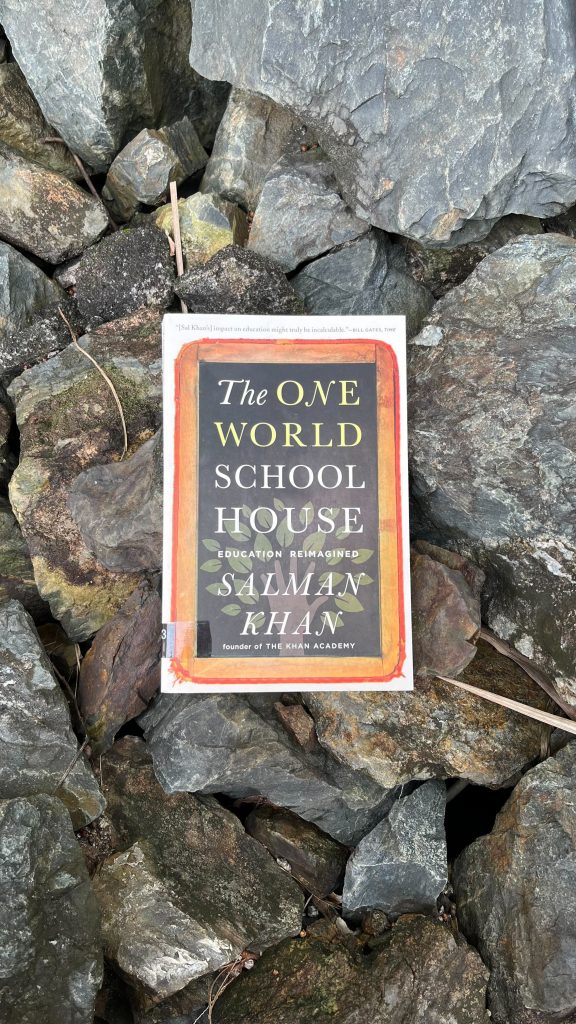Name: Suriyana Mohd Noor
Book: The One World Schoolhouse: Education Reimagined
Editors: Salman Khan
Publisher: Twelve; Reprint edition
Publication Year: 2013
Book Language: English
Pages: 532


Book Synopsis:
A free, world-class education for anyone, anywhere: this is the goal of the Khan Academy, a passion project that grew from an ex-engineer and hedge funder’s online tutoring sessions with his niece, who was struggling with algebra, into a worldwide phenomenon. Today millions of students, parents, and teachers use the Khan Academy’s free videos and software, which have expanded to encompass nearly every conceivable subject; and Academy techniques are being employed with exciting results in a growing number of classrooms around the globe
Like many innovators, Khan rethinks existing assumptions and imagines what education could be if freed from them. And his core idea-liberating teachers from lecturing and state-mandated calendars and opening up class time for truly human interaction-has become his life’s passion. Schools seek his advice about connecting to students in a digital age, and people of all ages and backgrounds flock to the site to utilize this fresh approach to learning.
Comments:
Salman Khan (no, not the actor, but a former engineer turned educator) is a creative and innovative person, who wants to revolutionise education. One of the major issues with learning in a classroom environment is that it can get repetitive and uninteresting, causing the students to be disconnected. This book illustrates his effort in making education more fun and engaging, in various creative ways. For instance, when presented with a problem or question, the students are given opportunities to think out of the box and present them in front of their class. If possible, then develop one-to-one connectivity with every student. Get yourself involved in teaching learning activities with passion which helps to acquire students’ attention. Many times, use quizzes, puzzles, etc in classroom discussions which also helps a lot to make the classroom engagement.
My favourite chapter is Part 3, Into the Real World. This chapter gives the basics of Khan’s “One World Schoolhouse” via his famous words: “Education does not need to be hostage to any dogmatic theory” (pg.131). In this part, he emphasises on how important to differentiate learning for learners by using the means of the technology age and also, he underlines the learner differences as he mentions andragogy- how adult learners learn which is quite different from young learners. He says that enhancing learning with technology is not just putting whiteboards into the classroom, it should be done with careful and elaborate planning. Also, he states that the quality time between the teacher and the students can be created and also increased if the technology used in learning is well planned and to the point. Through the end of the part, Khan gives a brief history of how his short videos turned into World-Renowned online courses and how his courses were multi-million dollars funded by the Gates Foundation and Google.
In conclusion, like many innovators, Khan rethinks existing assumptions and imagines a learning environment without them. In the One World Schoolhouse, Khan presents his futuristic vision of education via his own teaching experiences started with his cousin Nadia. His way of serving his video tutorials via YouTube and then on his website inspired many others in e-learning and helped them improve and enhance their courses. He believes that more than just an educational solution, this book is like a call for free, universal, global education that can be achieved via the correct use of technology and the Internet and he suggests that educational professionals in charge should take the initiative to provide better learning environments to the learners of today and the future.
Excerpts:
“Personal responsibility is not only undervalued but actually discouraged by the standard classroom model, with its enforced passivity and rigid boundaries of curriculum and time. Denied the opportunity to make even the most basic decisions about how and what they will learn, students stop short of full commitment.” – Part 1, Mastery Learning, Page 43
“These are the kinds of curious, mysterious, and original minds that often end up making major contributions to our world; to reach their full potential, however, they need the latitude to follow their own oblique, nonstandard paths. That latitude is seldom found in a conventional, box-shaped classroom in which everyone is supposed to be doing the same lesson, and “differentness” is generally used as a negative.” – Part 4, Ordered Chaos Is a Good Thing, Page 205
“Our schools should be the same—environments for safe experimentation, viewing failure as an opportunity for learning rather than a mark of shame.” – Part 4, Making Time for Creativity, Page 250
This book is available at the Perdana Library. If you are interested in reading or borrowing the book, please visit our Library in Putrajaya, or contact us at 03-8885 8961 (Library Counter).


